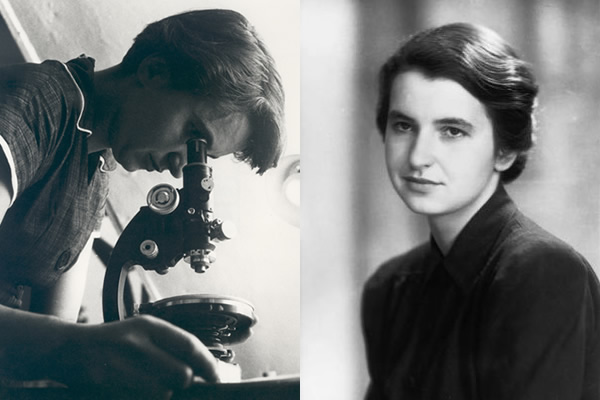Rosalind Franklin
1920 – 1958
Who: English chemist and x-ray crystallographer. Discovered DNA. Victim of research theft, when her colleagues James Watson and Francis Crick (along with Maurice Wilkins) took credit for her breakthrough and went on to win the Nobel Prize in 1962.
Signature Difficult Moves: Long before discovering the double helix structure of DNA, 15 year old Franklin vowed to become a scientist against her father’s wishes (he was opposed to higher education for women.) Ignoring his displeasure, Rosalind enrolled in Cambridge and went on to make the greatest scientific discovery of the 20th century.
What People Said About Her: “Rosalind Franklin, once described by Maurice Wilkins as ‘our dark lady’, cannot have been an easy person to work with. Combative when she knew she was right, she was direct, intellectually brilliant and demanding of her colleagues. Most of them saw only one side of her. Away from her lab she was a keen climber, an excellent cook, a much-loved daughter, sister, aunt and friend, whose care and thoughtfulness touched all on whom she bestowed her attentions.” – Rachel Padman, historian at Newnham College, Cambridge (2004).
Personals: Married to her work.
Feminine Charms: Had more important things to think about.
How She Spoke Truth To Power: Working with complete dedication in the sexist, all-male scientific establishment of Kings College. Crick later admitted, “I’m afraid we used to adopt — let’s say, a patronizing attitude toward her.” Whether he said this before or after he stole her research is unclear.
Quote To Live By: (For science majors) “The results suggest a helical structure (which must be very closely packed) containing probably two, three, or four coaxial nucleic acid chains per helical unit and having the phosphate groups on the outside.”
(For the rest of us) “Science and everyday life cannot and should not be separated.”








